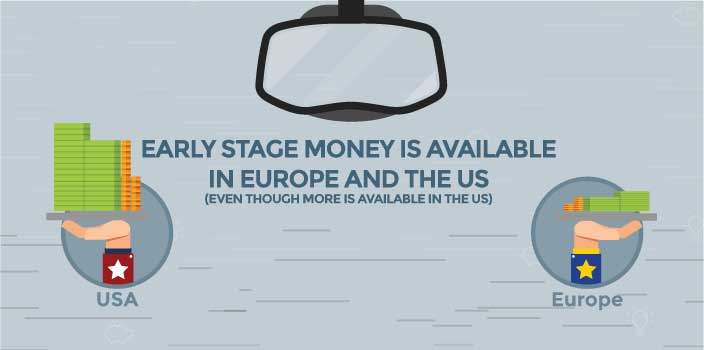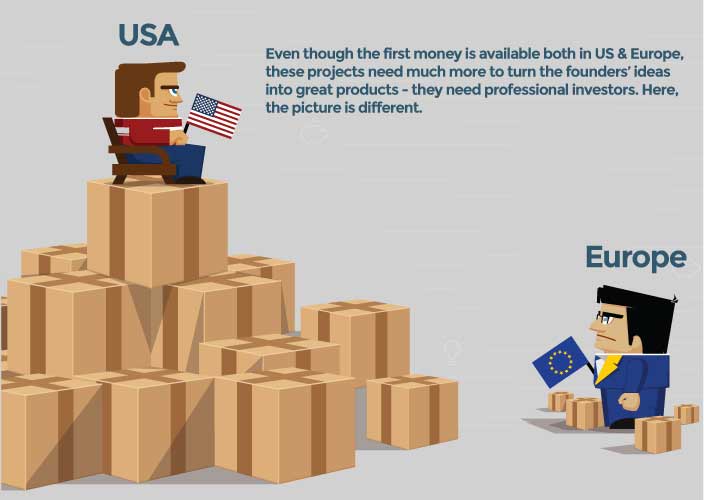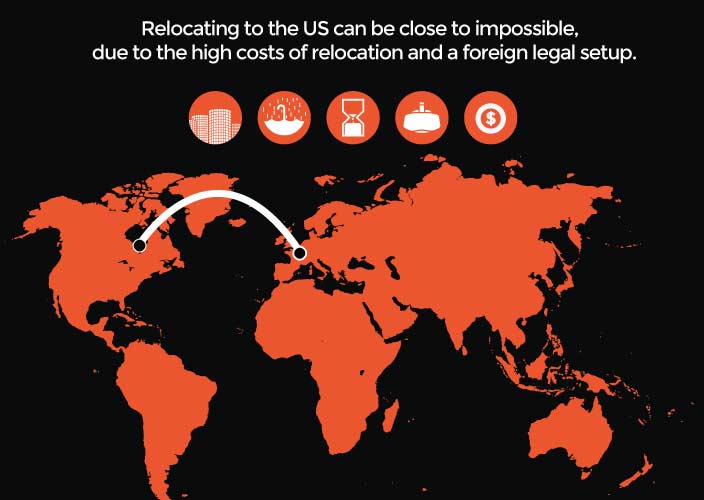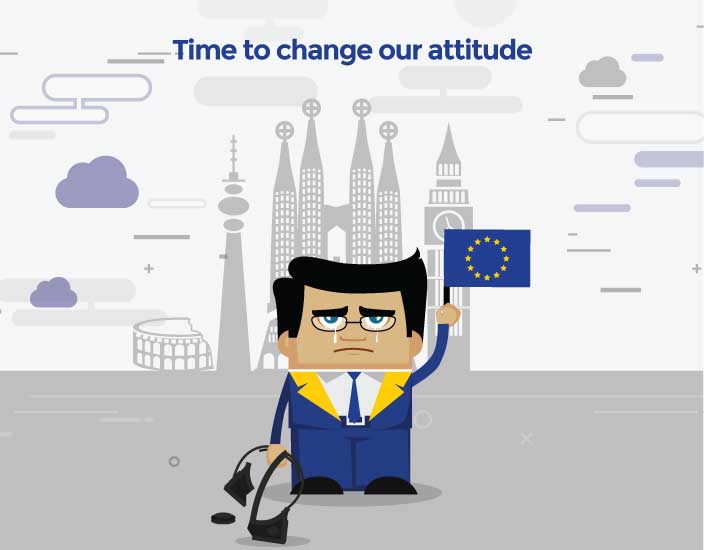Let’s face it: Europe’s reputation has never been that of a vibrant tech startup continent. Many factors can be named as the underlying reasons for this: brain drain, scalability problems across countries, a general tendency of people to focus on less risky ventures and a proclivity towards proven business models, just to name a few. It seems that a risk-averse mindset is deeply entrenched in the European culture. This has — at least historically — been the case. Truly innovative ventures in emerging technologies were most often based in the US, much to the dismay of the European economy, which had to pay the price of adopting new groundbreaking technological solutions, rather than inventing them.
The fundamentals of Europe’s startup ecosystem nowadays, however, stand in contradiction to these findings. The diversity of culture is a source for innovative ideas and new approaches, excellent schools enable young minds to learn the necessary essentials and well-funded research gives a technological backbone to the startup industry. Most importantly, however, entrepreneurship is booming in Europe.
While, for example, the Berlin startup scene was often seen as flooded with “me-too” copies of consumer startups with their flagship clone factory Rocket Internet pushing out e-commerce giants with German execution and accuracy every day, it seems that more and more people are moving into new technologies and are working on really groundbreaking ideas — with high risk and high potential return.
The problem with these emerging technology ventures is that they are significantly different from their e-commerce, marketplace and consumer startup sisters. They demand much more capital in order to build a great product, a longer breath, as markets need to develop first, and, most importantly, a real risk-taking attitude, because technological and market uncertainty is even more ubiquitous here than in other startups.
As a company builder focusing on technologies such as Virtual Reality, we are in daily contact with European startups and deeply feel the pains of fellow founders who are sick of e-commerce clones and “order-your-own-cereal” startups, those who are longing for the endless sea of true innovation and real disruptive change (excuse this slight adjustment — if not bastardization — of the famous words accounted to Antoine de Saint-Exupéry). Founders now in Europe have shown that they exhibit the long breath and right risk-taking attitude needed to start emerging tech ventures, but the final element, the funding, seems to be missing in our European startup ecosystem. In our area of expertise, Virtual Reality, we can identify the good, the bad and the ugly sides of European funding for emerging tech startups.
The good: the first funding is always available
Startups are hot — especially new technologies, and people are ready to invest money into them. If the rich uncle in Europe 10 years ago still invested his risk capital in Ukraine (much to his dismay the Kremlin had different ideas for that region) now he is very open to listening to his young nephew talking about how he will change the world. And he is ready to fund this effort with a small, but decisive sum.
This change in mindset is vital for European founders, because, if the founding team of an emerging tech venture manages to come up with something tangible with these funds, the whole project suddenly gets very interesting — yet it needs a lot more money and effort to turn this rough diamond into a beautiful unicorn.
The bad: the game-changing money to move from a prototype to a releasable product is not available
Exactly at this stage, however, the money to shift gears is unfortunately not available. As part of our fundraising efforts, we did an analysis of the investment landscape in Virtual Reality, and could only find two publicly announced investments into VR software companies that came from European investors, Videostitch at $2.3 million and MureVR at $160,000. In contrast, a similar analysis for the US showed a plethora of startups with an average investment sum of $5.8 million; with the top ten most funded VR startups boosting a total of $139 million. This discrepancy in announced funding between the US and Europe is mindblowing. Check out the infographic below for more details.
Please note that we are counting investments by the region the investor comes from, meaning that a European startup raising money by US investors would be counted on the US side. Additionally, we excluded crowdfunding campaigns as they don’t qualify as professional investments. Finally, we decided to omit pure VR-hardware startups, as many of these ventures are significantly more mature and their valuations would drastically influence the results of our analysis.
It seems that VCs and professional Business Angels in Europe are failing to give great startups the chances they deserve. One could argue that there are no attractive VR startups in Europe, but we would beg the differ. Many startups who failed to raise funds in Europe moved to the US where they received massive investments. These startups are now transforming into real businesses — far away from Europe. It feels as if technologies, business models and markets need to be proven beyond any reasonable doubt in the “old world”, something intrinsically impossible for emerging tech ventures.
The ugly: stuck at a glass ceiling
The implications of this problem are huge, because the move to the US is sometimes close to impossible. With no connections, not enough cash to relocate and settle in, plus a legal structure (European company and shareholders) which is more than unattractive for US investors, the European ventures are stuck in a deadlock, where both staying and leaving seem to be bad options.
As quantum of solace, we can identify some success cases. Psious, a VR startup from Barcelona, Spain, unsuccessfully searched for funding in Europe for more than five months, but eventually got accepted to the River program by Rothenberg Ventures in San Francisco. Now, they gladly announced a $1.3 million funding round by US investors and in fact it took them only three weeks to close this funding. They say that the move to the US was hard, but that it was their best decision. Now they are revolutionizing phobia treatment and are on the fast lane to serious success.
Some workarounds
There are some ways to prepare for the challenges of European emerging-tech startups. The first thing is die-hard cost control. In our company, we work with globally dispersed tech teams, picking up the best talent from any region, resulting in comparatively low costs for development. This buys us more time and makes us less dependent on large funds.
What also helped our ventures is a strong network of Business Angels who can offer small, yet decisive sums in difficult times. An important part, however, is to connect to the US from very early onwards. Our first visit to the US with one venture was only three months into the start of the project. All of this only works with diligent research about investment opportunities and a thoroughly thought-through strategy about how to approach investors and how to streamline the development roadmap accordingly.
What now?
These workarounds, however, don’t solve our underlying problem — that professional funds are rarely available. What we specifically ask from European investors is not a complete change in mindset or a reckless investment behavior, eventually resulting in another bubble. We would, much more, like to see the first steps to move towards embracing these new opportunities. For this, we ask that VCs and full-time Business Angels actively inform themselves about these new trends and develop tools and processes to properly evaluate (and valuate) new technologies and business models. Even if this means they have to invest into the acquisition of this know-how, we strongly believe that they and the European ecosystem will benefit from such steps in the long run. Additionally, they should try to partner with US-based investors or find other ways to become exposed to these technologies. Joint investments, advisory board positions and regular trips to the San Francisco Bay Area could be starting points here.
All of this, however, needs one more puzzle piece. We need to loosen up and break the chains we put on ourselves — we have to start dreaming more, and accept failure as a step towards success. We need this daredevil attitude in our spirits, that little bit of insanity and restlessness, this slight delusion of grandeur which will not let us settle for less. These are the elements great companies are built from — and both founders and investors need them. Because, at the end of the day, we can run as many cash flow analyses and statistics as we wish, but if we fail to take risks and don’t start chasing dreams, we will never turn Europe into the innovative powerhouse we want to be.
This article has been posted by Hector Manzano from Pomer.co
This article was written by Christoph Fleischmann and was originally featured on QBXNet.com. QBXNet is a unique technology platform with a mission to innovate the way companies bring new products to market. With operations across 3 continents, they have the technical ability to build complex and fully integrated applications for web, mobile, wearables, augmented and virtual reality platforms. You can contact them directly here.












I am also not so statisfied with the state of investment and funding in europe. Everytime hearing that the next best selling app comes from USA makes me a bit sad. I lived in Germany, Bavaria and even if it is the richest State in Germany with so many potential investors, nothing big comes out of it. Like people do not dream in Germany and the investors do not believe in IT. I just do not know whos fault is that. From Investors not trying to understand us the IT Profesionals, or is it ours cause we do not seek and try harder to explain the hard to understand IT Business…